There is a satisfaction that comes from being told you are too weak to face a challenge and then quickly handing your enemy their defeat on a silver platter regardless. Being the David to your enemy’s Goliath and leveraging not just physical but strategic power to overcome the odds is a thrill that never gets old. That’s why no matter how many times I finish a battle in Unicorn Overlord, I remain eager to find my next combatant and teach them not to underestimate me.
The self-described tactical RPG (that is in reality more of a real-time strategy game) comes to us from Vanillaware, the developer behind games like Odin’s Sphere and 13 Sentinels: Aegis Rim, and it’s a marvel of system design that blends planning ahead with fast-paced reactions. Just when you think you’ve learned everything you need to know about how to approach and win its large-scale tactical battles, it unveils yet another piece of the puzzle you need to consider. While the narrative of Vanillaware’s latest release doesn’t reach the heights that fans of the twisting 13 Sentinels may hope for, it doesn’t need to—not when its combat is so meticulously designed and captivating. Unicorn Overlord is one of the most impressive tactics games in recent memory, and it’s not to be missed.
Welcome to Fevrith, now let’s go to war
Unicorn Overlord takes place in the medieval world of Fevrith. Cast in the role of Prince Alain, the rightful heir to the throne, you are charged with liberating the world from the clutches of an evil emperor. It’s all fairly generic and mostly acts as set-dressing. All you really need to know for now is that Vanillaware’s tactics RPG is about assembling an army and winning battles across the map as part of your play to reclaim the throne.
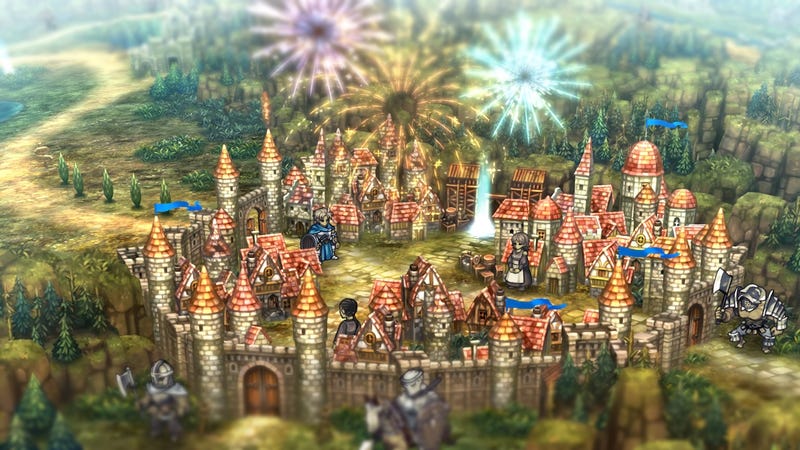
Those battles are the game’s bread and butter. Scattered across the expansive overworld that is the five kingdoms of Fevrith, encounters can range from small skirmishes to massive, multi-stage battles across a large swath of the map. The game eases you into the scale of fights as well as the sheer amount of systems you have to engage with through the opening couple of hours (which make up the currently available demo). This early stretch includes some battles that may feel slow to genre aficionados, but it serves a necessary purpose, dispensing important information on the game’s workings in bite-sized chunks. Before long, you’ll find that battles are nothing if not fast-paced and stress-inducing (in a good way).
A typical Unicorn Overlord battle plays out as follows. You start at a Command Post on one side of the map and typically must defeat a boss at the other end and capture the enemy Command Post. You summon units by spending Valor Points, and then direct those units through the map. Valor Points accrue over time by defeating enemy units or capturing enemy outposts. In addition to acting as a resource to summon your combatants, Valor Points can also be spent to use characters’ special abilities, called Valor Skills. The other main resource to keep track of is Stamina, which every unit has a set amount of. Every encounter with an enemy unit consumes stamina, and when it’s depleted, a unit can no longer move or defend themselves.
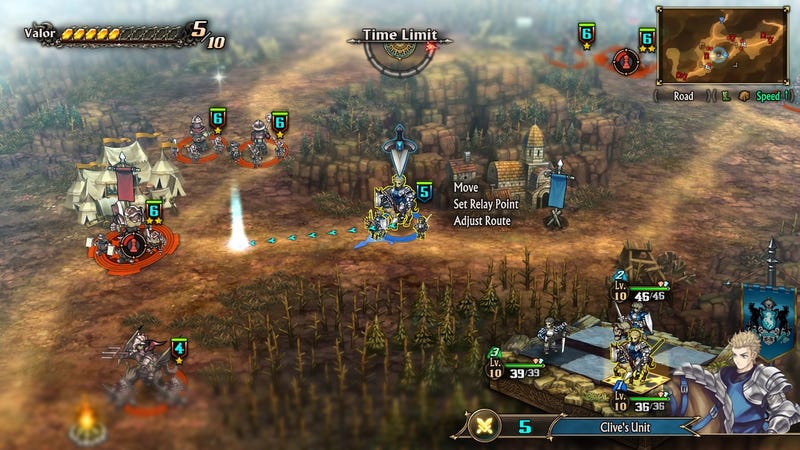
All of this occurs in real-time on the map, though you can (and should) pause at any time to take a second and assess your troop movements. And while you do tell units where to go, they are pretty self-sufficient when it comes to actually clashing with enemies. That’s thanks to the Tactics system, which is the best riff on Final Fantasy XII’s gambit system since…well Final Fantasy XII. Before battle, you are able to fine tune how each character in a unit acts, such as telling a healer to only use a healing spell when an allied unit’s health goes below a certain percentage, or advising a cavalry unit to use a specific attack when clashing with a unit that has a thief in it.
It’s like extra-complicated chess
That’s the simplest explanation I can muster, but it hardly scratches the surface of how complex these battles become. Much of that complexity is due to the game’s unit system. Units are groups of fighters organized into two rows of three. Though you direct your units in real time across the map, when two opposing units clash, you’re sent to a separate screen where those forces duke it out. The outcome is determined by how you’ve organized the unit, and what each character’s advantages or weaknesses are compared to those of their foes. While Unicorn Overlord draws on many other tactics and real-time strategy games for inspiration, the biggest influence is Ogre Battle 64, whose blending of both genres was enough to secure it a cult status. Like that Nintendo 64 title, Unicorn Overlord pulls from both spectrums of influence to create a combat system that equally values strategic planning and on-the-fly unit movement.
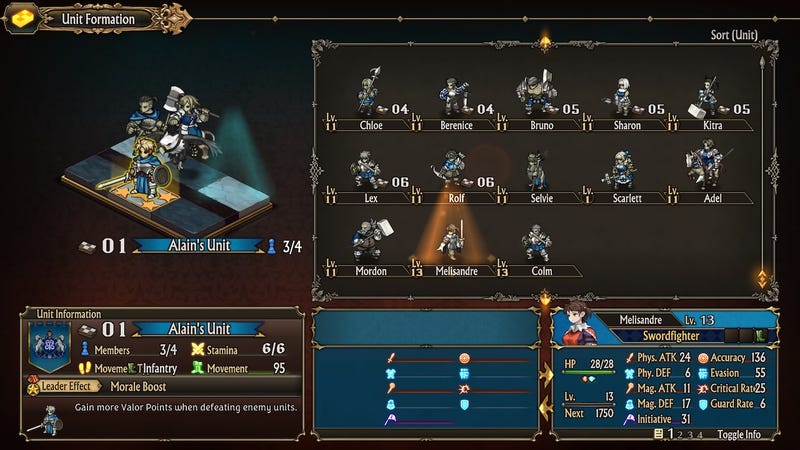
Units can include up to six fighters, but Unicorn Overlord starts you off small with two units, each with a limit of two characters. Each character has a class with its own benefits. The Thief class, for example, efficiently dodges attacks, while Gryphon Knights give you the advantage of being able to fly across the map. Many of these characters are collected by completing side quests throughout the world. Given the game’s fairly basic narrative, though, the most interesting thing about these characters is their gorgeous art design, but the full glory of the studio’s signature style is only seen in cutscenes and during unit clashes. While exploring the overworld or directing units on a battle map, Unicorn Overlord renders the world in a bite-sized, almost chibi fashion. It’s by no means ugly, but you can’t help but wish that the entire game was rendered in its full scale.
Units can also be upgraded over time, giving you access to more units and more characters within each unit—not to mention upgraded classes further into the game. That is done with Honors, another currency earned by completing various tasks like making deliveries and even rounding up chickens.

Eventually, all these systems (and others which I haven’t mentioned because there’s just so much in this game) come together in those glorious large-scale battles I mentioned. The game opens up the world to you after you complete your first big battle, only for it to offer up ever-more-complex fights, as if to say “you ain’t seen nothin’ yet.” These bigger battles that make up the game’s main quest are all incredibly well-designed challenges that continuously add to or subvert what you’ve already learned.
Putting it all together
One particularly memorable encounter comes in the kingdom of Drakenhold. After so many battles with the win condition of “attack the enemy across the map and capture the command post,” you face one in which enemy forces surround you and move toward you, while your job is now to defend the command post. The game tells you that you can fight your way to a boss to end the battle, though you could also try to make this a war of attrition and simply outlast your enemy. It’s an expertly executed twist that makes you rethink how you’ve been playing the game.
And this happens in battle after battle. Another tricky encounter revealed that it was actually a multi-stage fight after I had wasted a number of my units to defeat the boss, who then transported across the map and challenged me to beat them once more. (Tip: remember to save during big battles, which is something you can do!) Sometimes weather affects battles and restricts your vision of the field, making planning out movement that much harder. But these twists on the formula never feel like a cheap move that’s meant to punish you. Rather, they’re a challenge to think smarter, which is what this game is all about. Being strategic. Despite battles playing out in real-time, so much of the outcome is determined before you even start an encounter. You have to think about unit organization, equipment, and carefully tuning the Tactics menu. But again, that doesn’t mean the real-time movement within battles is unimportant. Guiding your units deftly through a map and challenging specific enemy combatants is a necessary skill. A player needs to master both key points of Unicorn Overlord’s combat to succeed.
The benefit of Unicorn Overlord’s deference to tactics is that if you truly think strategically, you can always come out the victor. During my time with the game I was almost always under the recommended level for an encounter. Instead of grinding to outlevel my opponent, I prioritized taking time to devise the best plan to beat them. This can lead to deceptively simple approaches that make once-complex battles seem like a breeze. One of my most reliable setups revolved around looking at the weaknesses of a boss and tailoring one strong unit composed of characters with advantage over the boss in question to take them down through setting up the proper Tactics and equipping the strongest gear. I would then reserve one spot on the unit for a flying character as this allowed me to avoid a number of smaller enemies in my path and beeline directly to the boss, taking them out and ending the fight in no time. With this approach, I even completed one fight in fourteen seconds. You can’t really grind to overpower enemies anyway, as the rock-paper-scissors-like system of strengths and weaknesses each character intrinsically has carries more weight than their level.
Exactly what it wants to be
So much of Unicorn Overlord’s momentum across its tens of hours is maintained through these progressively more challenging battles. What will not propel you through Unicorn Overlord is its narrative. It’s not that there isn’t one. Like I said, a good monarch is here to rescue the world from the evil monarch. It’s just that this narrative is so utterly unoriginal, and the game itself never seems to put much weight on it. The opening of Unicorn Overlord shows that the enemy emperor was once a trusted aid to Alain’s mother, the Queen, but he betrayed them along with a number of other soldiers. This sets up the potential for an interesting story about why these people chose to rebel, suggesting that maybe we don’t know the full story. But within the first half hour, it’s revealed that most enemies you face down are actually just mind controlled. You fix that with magic and move along.
The only characters that seem to make their own choices are the grunts of the enemy forces. By and large, the high-born people who betrayed you get off scot free. This isn’t an interesting commentary on how people in power can escape punishment in the fictional and real worlds. It means nothing, because the high-born villains were mind-controlled and thus not responsible for their actions.
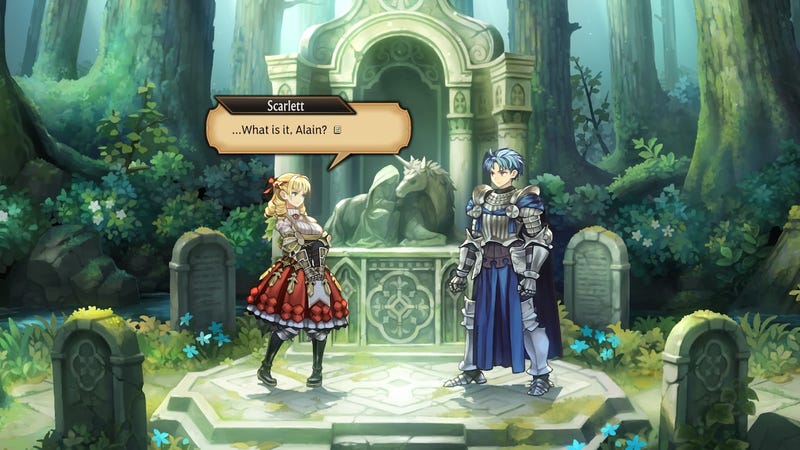
The attempt at bringing some level of morality to the game’s characters continues in the game’s boss fights, but similarly fails. You win and suddenly the enemy will give you some sob story about their sick sister or how they had no choice but to join the ranks of the evil empire. Then you’re given the option to spare them or sentence them to some punishment, be it execution or imprisonment. But since the characters feel so one-note and the conflict lacks real consequence, these choices are bereft of meaning. It’s not like this story really tries to do anything with the moral challenges faced by a ruler in the midst of attempting to overthrow another power. So at the end of the day it’s in your best interest to spare the enemy and let them join you, because you could always use another soldier in your army.
Much of this narrative weakness also comes from Alain himself. Hes relatively useless in combat, which makes you feel disconnected from him and his goals. To take the game’s narrative and mechanical intertwining at a level it certainly isn’t working on, there’s something eerily dark about Unicorn Overlord portraying the machinations of a monarch who is assumed to be “good” giving little care to the people he drafts into service, beyond their utility in gaining his throne back.
As the immediate follow-up to 13 Sentinels: Aegis Rim, the shoddy narrative of Unicorn Overlord is particularly disappointing. 13 Sentinels showed that Vanillaware is capable of telling a complex and emotional story, but none of that is present in Unicorn Overlord. Rather, this game is a direct inverse of its predecessor. Where 13 Sentinels prioritized narrative over its occasional RTS segments, Unicorn Overlord goes all in on tactical combat and puts narrative on the back burner. In another world, Unicorn Overlord could have blended both narrative and mechanics to great success in the same way that Fire Emblem: Three Houses does.
But Unicorn Overlord is not interested in that, and frankly it doesn’t need to be. This is not a game that is trying to be a narrative masterpiece; it is trying to be a mechanical marvel, and it accomplishes the latter in spades. The endlessly inventive and incredibly well-designed tactical systems at play in Unicorn Overlord make it a thrilling challenge to tackle. It isn’t just a game that longtime fans of Vanillaware should pay attention to, it’s for anybody wanting to play the next great tactics RPG. Unicorn Overlord is the game you’ve been waiting for.
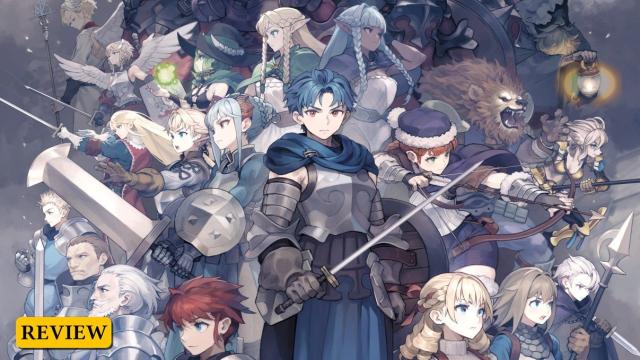
Leave a Reply